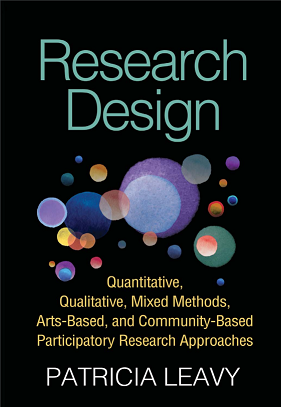
e-BOOK
Research Design: Quantitative, Qualitative, Mixed Methods, Arts-Based, and Community-Based Participatory Research Approaches
Cultural beliefs are another common source of knowledge. For example, our ideas about race and racism have changed over time as our culture has changed. In order to understand how biased our cultural understandings can be, consider norms regarding race before the civil rights movement. At that time, strongly held ideas about race, which most people would find racist today, were taken for granted.
We also develop knowledge from our personal and sensory experiences. We learn about our world based on what we see, hear, smell, taste, and touch. Sometimes these different ways of knowing coalesce to convince us of something. For example, as children, authority figures such as parents may tell us not to touch the
stove because it is hot and we will burn ourselves. Then, if we do accidentally touch the stove and it hurts, our personal sensory experience confirms for us what we were told. In a more complex example, if we personally experience or witness racial profiling or stereotyping, we may be more apt to believe that others experience the same.
Ketersediaan
| 155 | 001.42 | Website | Tersedia |
Informasi Detail
- Judul Seri
-
-
- No. Panggil
-
001.42
- Penerbit
- New York : The Guilford Press., 2017
- Deskripsi Fisik
-
320 halaman
- Bahasa
-
Inggris
- ISBN/ISSN
-
978-1-4625-1438-0
- Klasifikasi
-
001.42
- Tipe Isi
-
text
- Tipe Media
-
computer
- Tipe Pembawa
-
online resource
- Edisi
-
-
- Subjek
- Info Detail Spesifik
-
-
- Pernyataan Tanggungjawab
-
Patria Leavy
Versi lain/terkait
Tidak tersedia versi lain
Lampiran Berkas
Komentar
Anda harus login sebelum memberikan komentar
 Karya Umum
Karya Umum  Filsafat
Filsafat  Agama
Agama  Ilmu-ilmu Sosial
Ilmu-ilmu Sosial  Bahasa
Bahasa  Ilmu-ilmu Murni
Ilmu-ilmu Murni  Ilmu-ilmu Terapan
Ilmu-ilmu Terapan  Kesenian, Hiburan, dan Olahraga
Kesenian, Hiburan, dan Olahraga  Kesusastraan
Kesusastraan  Geografi dan Sejarah
Geografi dan Sejarah